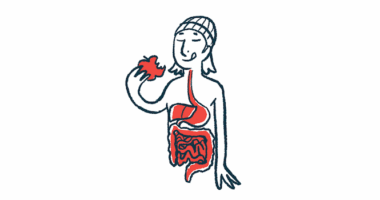Real-world study supports VPRIV use in very young Gaucher patients
Approved ERT appears safe, effective for treating children younger than 4

VPRIV (velaglucerase alfa), an approved enzyme replacement therapy (ERT) for Gaucher disease, appears to be safe and effective in children younger than 4 — an age group not included in the clinical trials that supported the treatment’s approval.
That’s according to a new U.S. real-world study that assessed VPRIV’s use in a small number of infants and very young children with Gaucher. In addition to evaluating the ERT for these youngsters, the researchers sought to “offer insights into the clinical course of patients … diagnosed and treated early in life.”
The data showed that most of the children who began VPRIV before age 4 showed reductions in liver and spleen size, as well as significant drops in key disease biomarkers, after six months of treatment. Blood counts and growth measures also generally improved or remained stable, the team noted.
“These preliminary findings show that in infants and young children … [VPRIV], administered mostly via home infusions, is well tolerated when initiated under 4 years of age and is associated with positive clinical outcomes,” the researchers wrote.
The study, “Enzyme replacement therapy in infants and very young children with Gaucher disease using velaglucerase alfa: a single-center experience,” was published in the journal Frontiers in Pediatrics. The work was sponsored by Takeda Pharmaceuticals, VPRIV’s developer.
Gaucher disease is caused by mutations in the GBA1 gene that result in a missing or defective glucocerebrosidase (GCase), an enzyme required to break down certain fatty molecules. In the absence of a functional enzyme, these molecules build up inside cells and drive the disease’s symptoms, often manifesting as enlarged organs, blood disorders, and bone abnormalities.
ERT, the standard treatment for Gaucher disease, works by supplying the body with a functional GCase, thereby restoring the normal breakdown of those fatty substances.
VPRIV approved in US for adults and children, ages 4 and older
VPRIV, approved since 2010 in the U.S., Canada, and the European Union, is indicated for adults and children with Gaucher disease type 1. The most common type of Gaucher, type 1 is marked by the absence of neurological symptoms. The therapy also is used off-label to improve the nonneurological symptoms of type 2 and type 3 disease, forms of Gaucher that also affect the nervous system.
However, the pivotal clinical trials that led to the treatment’s approval only involved patients ages 4 and older; thus, the ERT is not indicated for younger children. Evidence in infants and toddlers remains limited.
To address this gap, a group of U.S. researchers conducted a real-world study (NCT04721366) involving 11 children — six boys and five girls — who began VPRIV before age 4.
The children were diagnosed at a mean age of 14 months, with four identified through newborn screening. Four patients had signs suggestive of type 3 Gaucher disease, and three children showed features consistent with type 2. A disease type had not been definitely established for the others.
Treatment was started very early in some cases — before 3 months of age in four children — with the remaining patients beginning use between 3 months and 4 years of age. VPRIV was administered weekly or every other week by intravenous, or into-the-vein, infusion, most often at home. Treatment duration ranged from one to 57 months, or nearly five years. Seven children remained on the therapy for at least 20 months, or slightly longer than 1.5 years.
The study’s results showed that blood parameters, including hemoglobin and platelet levels, generally improved or remained stable in all patients with available data. Hemoglobin is the protein that carries oxygen in red blood cells, while platelets and cell fragments help the blood to clot. Low levels of these blood parameters are common signs of Gaucher disease.
Liver size also decreased to normal levels in seven patients, while spleen size normalized in all but one patient. Growth parameters such as head circumference, height, and weight, also improved or stayed stable for most patients throughout treatment.
Our study provides vital preliminary evidence on the effectiveness and safety of ERT with [VPRIV] in infants and children under 4 years old.
No Gaucher-related bone issues were reported in any patient during follow-up, and key biomarkers of disease burden, including lyso-Gb1 and chitotriosidase, were markedly reduced with treatment.
Importantly, the researchers reported no drug-related or infusion-related side effects, even with long-term use and in children at a very young age.
“Our study provides vital preliminary evidence on the effectiveness and safety of ERT with [VPRIV] in infants and children under 4 years old,” the researchers wrote, noting also that the findings suggest the “effectiveness of early intervention and therapy.”




